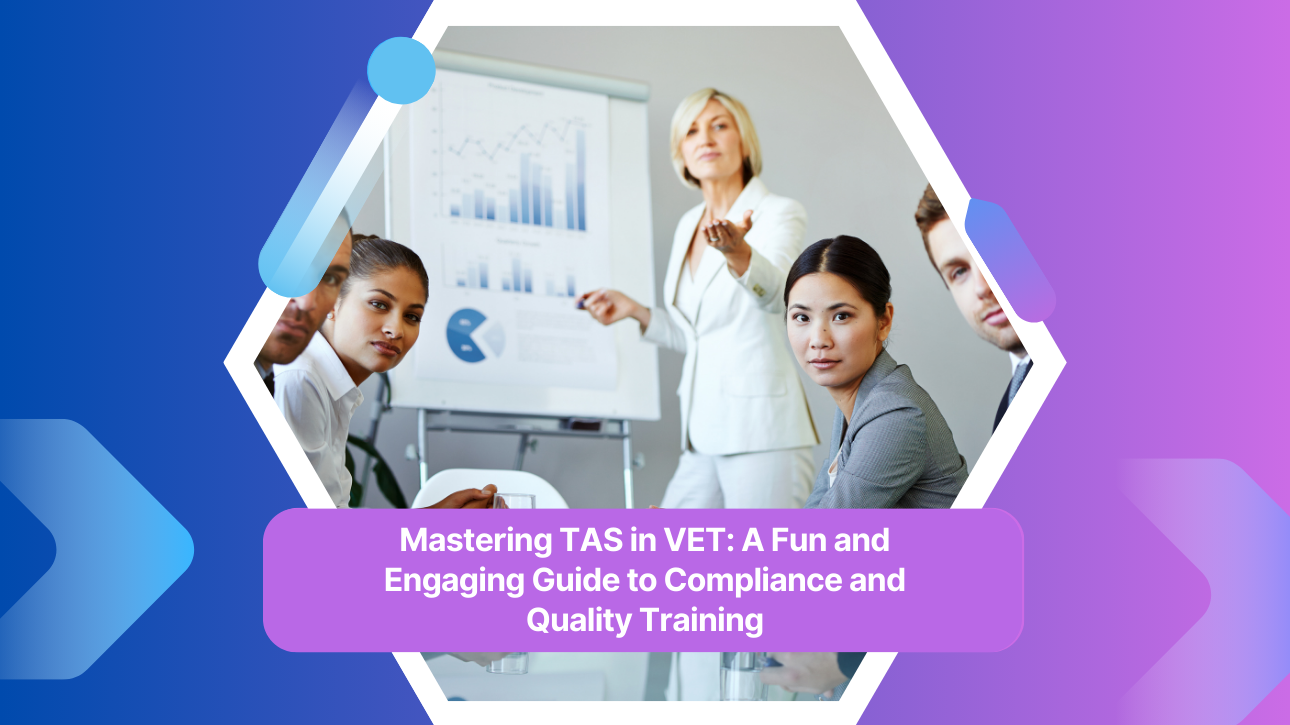🚀 Understanding TAS: The Blueprint for Quality VET Training
TAS is your roadmap for delivering top-notch VET courses. It aligns with training requirements to ensure your learners receive relevant education.
⏰ Structuring the Program Delivery
Outline your program structure, including timelines and delivery modes. It’s like setting up a game plan for a winning team.
📚 Ensuring Adequate Resources
Make sure you have all the tools and team members needed. Think of it as gathering ingredients for a masterchef recipe.
🌍 Meeting Diverse Learner Needs
Adapt your strategies to cater to all learners, like customising a playlist for different music tastes.
🤝 Industry Engagement
Stay in tune with industry trends and requirements, akin to syncing your watch with global time zones.
🔑 Entry Requirements and Cohort Information
Set clear entry criteria and understand your learners, like setting the right difficulty level in a video game.
🕒 Volume of learning and amount of training
Detail your training hours and learning volume, ensuring it’s as balanced as a well-planned workout routine.
📄 Sharing the TAS
Share your strategy with trainers, like a chef sharing a secret recipe with their team.
🗒️TAS Checklist Table
Here’s a handy checklist to ensure your TAS is on point, with an extra column for your notes and comments:
| TAS Component | Description & Tips | ✔️ Done | Comments/Notes 📝 |
| Training Package Alignment | Align with the latest training package requirements. | [ ] | |
| Program Structure | Detail the program structure, timelines, and delivery modes. | [ ] | |
| Resources | Ensure availability of physical and human resources. | [ ] | |
| Learner Needs | Strategies for diverse learner needs. | [ ] | |
| Industry Engagement | Document industry feedback and its application. | [ ] | |
| Entry Requirements | Define clear entry criteria for learners. | [ ] | |
| Cohort Analysis | Include detailed cohort information. | [ ] | |
| Amount of Training | Specify the planned contact hours and activities. | [ ] | |
| Volume of Learning | Combine amount of training with personal study time. | [ ] | |
| Monitoring and Evaluation | Plan for ongoing monitoring and updates. | [ ] | |
| Sharing the TAS | Share the TAS with trainers and assessors. | [ ] |
Conclusion
Creating a TAS can be a fun and engaging process. With this guide and checklist, you’re well on your way to developing a strategy that ensures compliance and enhances the educational experience. Remember, a great TAS is dynamic and adaptable!
Disclaimer:
The information presented on the VET Resources blog is for general guidance only. While we strive for accuracy, we cannot guarantee the completeness or timeliness of the information. VET Resources is not responsible for any errors or omissions, or for the results obtained from the use of this information. Always consult a professional for advice tailored to your circumstances.






